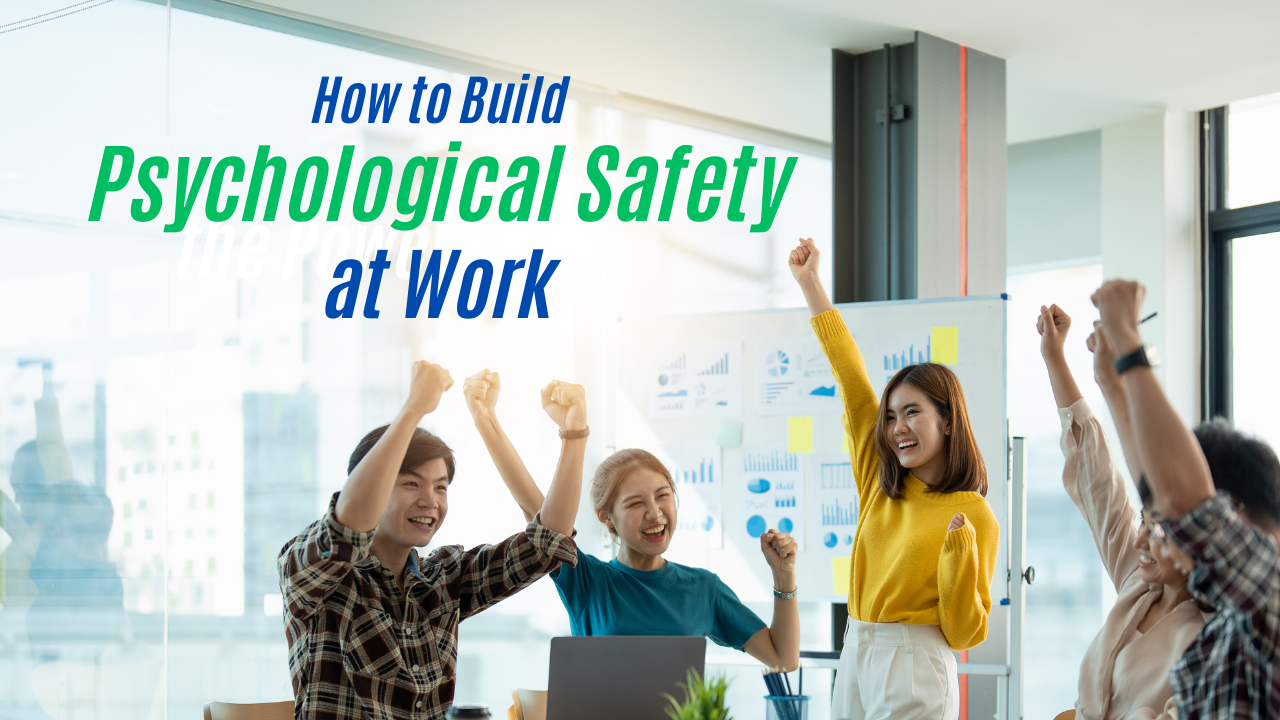Have you ever wondered why some teams thrive while others struggle, even when they have similar resources and talent? The reason often lies in something you can’t see or touch — Psychological Safety.
Imagine working in an environment where you feel completely safe to speak your mind, share bold ideas, or admit mistakes without fear of judgment. It’s not just a dream—it’s a real, science-backed phenomenon that transforms teams and organizations. And here’s the kicker: the way our brains are wired makes psychological safety not just important but essential for unlocking peak performance.
Psychological safety is the shared belief within a team that it’s safe to take interpersonal risks—to speak up, share ideas, admit mistakes, and ask for help without fear of ridicule, rejection, or punishment. It’s not about making everyone comfortable all the time. Instead, it’s about creating an environment where people feel safe enough to be vulnerable, to challenge ideas, and to innovate.
Watch the video on this article on Youtube.
Psychological Safety was popularized by Harvard professor Dr. Amy Edmondson and is supported by neuroscience studies. When people feel unsafe at work—even psychologically unsafe—their brains activate the amygdala which creates an automatic response often referred to as “fight or flight”. Essentially, it puts a person into survival mode and shuts part of the brain down, reducing creativity, problem-solving abilities, and willingness to collaborate.
On the other hand, when people feel psychologically safe, the brain shifts away from the threat response. The prefrontal cortex—the part responsible for higher-order thinking, decision-making, and innovation—becomes more active.
This shift is largely due to neurochemical changes. When people feel safe, oxytocin levels rise. Oxytocin is sometimes called the “trust hormone” because it helps build connection and reduces the stress hormone cortisol. Essentially, psychological safety isn’t just a concept—it’s a measurable brain state.
Now that we understand the science, let’s talk about why it matters. When teams experience high levels of psychological safety, amazing things happen:
- Improved Collaboration: People share ideas and solutions more freely. They’re not worried about being judged or shut down.
- Greater Innovation: A safe space encourages risk-taking and creative problem-solving. That’s where innovation thrives.
- Higher Engagement: Employees who feel safe are more engaged and invested in their work. They feel valued.
- Stronger Performance: Studies show that teams with high psychological safety outperform their peers consistently.
- Faster Learning: People learn from mistakes and adapt quickly when it’s safe to discuss what went wrong.
Psychological safety is a catalyst for peak performance!
If you are a leader, building psychological safety within your team can quickly boost engagement and performance? Here are three strategies that are backed by both neuroscience and real-world results.
Strategy 1: Encourage Open Dialogue.
Leaders must model openness by inviting feedback and demonstrating vulnerability. Share your own mistakes and what you’ve learned.
When you do this, you’re showing your team that it’s okay to be imperfect. This reduces the fear of failure and encourages everyone to share ideas without hesitation. Remember, vulnerability from the leader—done appropriately—is one of the fastest ways to foster trust.
Strategy 2: Recognize and Validate Contributions.
Acknowledgment triggers dopamine in the brain. When you recognize someone’s input, no matter how small, it reinforces that their voice matters. Say things like, “That’s an interesting idea” or “I hadn’t thought of it that way—thank you for sharing.”
This kind of validation helps people feel seen and appreciated, which strengthens their confidence to contribute more in the future.
Strategy 3: Establish a Learning Culture.
Create a culture where mistakes are viewed as opportunities for learning. When someone makes an error, avoid blame. Instead, ask, “What can we learn from this?”
This shifts the focus from fear to growth. It also rewires the brain over time. People begin to see challenges and setbacks as part of the journey rather than threats to avoid.
A high level of psychological safety can become a key characteristic of your team’s culture if you are intentional about building it. Use the three strategies above and you will be well on your way to being an effective leader with a high-performing and innovative team. And don’t be too surprised when word gets out and everyone want to be on your team.
Research Bibliography
-
Edmondson, A. (1999). Psychological Safety and Learning Behavior in Work Teams. Administrative Science Quarterly, 44(2), 350-383.
-
LeDoux, J. (1998). The Emotional Brain. Simon & Schuster.
-
Rock, D. (2009). Your Brain at Work. Harper Business.
-
Zak, P. J. (2012). The Moral Molecule: How Trust Works. Dutton.
-
Google. (2015). Re:Work—Guide: Understand Team Effectiveness. Retrieved from rework.withgoogle.com.
-
Brown, B. (2012). Daring Greatly. Gotham Books.
-
Gottman, J. (1999). The Seven Principles for Making Marriage Work. Harmony Books.
-
Dweck, C. (2006). Mindset: The New Psychology of Success. Ballantine Books.

